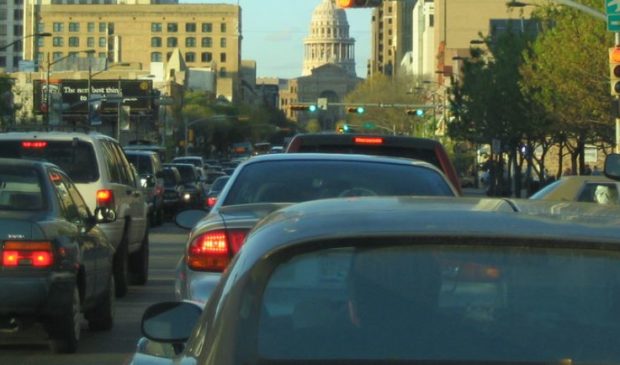Downtown leaders eye busing changes to manage traffic growth
Monday, October 30, 2017 by
Chad Swiatecki Downtown Austin leaders are hoping that proposed changes in downtown routes and frequency for Capital Metropolitan Transportation Authority bus service will increase the number of employers in the city’s core willing to offer alternative transportation plans for their employees in coming years.
At a recent meeting of the city’s Downtown Commission, a pair of presentations from Capital Metro and the Movability Austin nonprofit offered a look at the role downtown employers can play in helping to increase ridership and reduce the use of single-occupant vehicles as the prime option for commuting to work.
Roberto Gonzalez, Capital Metro’s short-range planning manager, gave the commission a review of the potential route changes that are due for approval next month. He said continuous service with stops along priority routes at least every 15 minutes, seven days a week, is expected to increase use because riders will know a bus will arrive at their stop without a long wait. The changes are part of short-term updates that happen every five years to take into account population growth that is already in progress.
“We know that the area east of the Capitol will continue to develop with projects like the Brackenridge tract and the Capitol Complex redevelopment, so we’re responding to those needs,” he told the Austin Monitor. “If employers want to do things to help, it can be helping to pay for transit passes and helping with some combination of bus with other options.”
Caitlin D’Alton, a senior planner with Capital Metro, told the Monitor the 15-month study that went into the proposed service changes took into account the needs of employers and workers throughout the Capital Metro service area while keeping in mind the use patterns in certain parts of the city, such as downtown.
“The main objective is to provide options for people other than auto, and a big part of the conversation is letting employers and residents know what is coming,” she said. “There’s only so much we can grow as far as auto use and with fixed roadway geometry the question is, how do we move so many people every day?”
Employers play a large role in creating the volume of traffic into and out of downtown Austin each day, with an estimated 67,000 jobs focused downtown or in adjacent areas as of 2010, according to data from the Capital Area Metropolitan Planning Organization. With major employers such as Bank of America, Wells Fargo Bank, the state of Texas, the University of Texas and St. David’s HealthCare focused in the area, and newcomers such as Merck & Co. headed there soon with hundreds more jobs, CAMPO projects a 51 percent increase in the downtown job total by 2040.
Movability Austin is the group that has taken the lead on moving employees out of their cars, with an estimated 80 percent of downtown workers traveling there alone in their cars each day. The organization contracts with large employers in the area such as Seton Healthcare Family and Silicon Labs to create alternative transportation plans meant to reduce their workforce’s use of single-driver cars.
Molly Alexander, executive vice president of economic development for the Downtown Austin Alliance, said the increased frequency of Capital Metro service adds a needed component of predictability that will help move more workers onto buses more often. Alexander said increased use of public transit, allowing employees to work remotely once a week or more and the creation of an all-in-one platform to let employers and workers choose from a full menu of transit options are the best tools for managing car traffic as Austin grows.
“For us, the best things that can happen to the regional transit system are adding frequency and reliability, because if people know they only have 15 minutes or less of a wait for a ride, then it’s easier to help them learn to use the system,” she told the Monitor. “Once the new service is in place then it’s easier to show people how it will work. When some people change their behavior and other people see how they can benefit, that’s what helps us sell it to others.”
Photo by Ken Lund made available through a Creative Commons license.
The Austin Monitor’s work is made possible by donations from the community. Though our reporting covers donors from time to time, we are careful to keep business and editorial efforts separate while maintaining transparency. A complete list of donors is available here, and our code of ethics is explained here.
You're a community leader
And we’re honored you look to us for serious, in-depth news. You know a strong community needs local and dedicated watchdog reporting. We’re here for you and that won’t change. Now will you take the powerful next step and support our nonprofit news organization?






